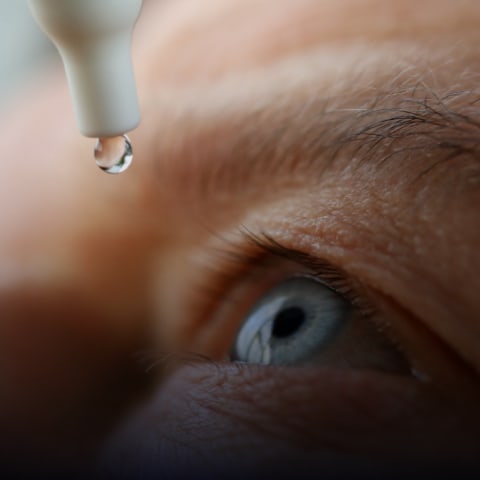As parents, you want to make sure your child is healthy in every way possible, including their vision. Your child’s first eye exam is a crucial milestone in their overall health and wellness.
Even if your children do not show any signs of vision problems, eye professionals recommend that they have their first eye exam at a young age, around 6 months to a year old.
Prevention is always ideal when it comes to eye care and health in general. Eye diseases and eye emergencies may be avoidable by getting regular eye exams and living a healthy lifestyle.
At our Bonavsita Eyecare, Olds Eyecare, Carstairs Eyecare and Sundre Eyecare, our teams takes the time to get to know you and your eyes. We answer all of your questions and always provide you with detailed information. We know you’re investing in us for your care, so we invest in your eyes!
Importance of Early Eye Exams for Children
A child’s eyesight plays a crucial role in their growth. According to the Canadian Association of Optometrists, 1 out of every 7 Canadians experience visual impairment, and 1 out of every 4 kids in school has a vision problem that’s gone unnoticed. What’s even more shocking is that more than half of all parents, 61%, to be exact, are under the impression that they’d be aware if their child was struggling with their vision.
A lot of what children learn in school is presented visually, underlining the importance of healthy vision for academic success.
Early detection and treatment of potential issues can prevent or limit future complications, such as amblyopia (lazy eye) and strabismus (crossed eye), which could result in lasting vision damage if not addressed promptly.
The National Collaborating Centre for Indigenous Health also emphasizes the significance of eye exams for children. The booklet they provide offers tips on how parents and teachers can help children use their vision effectively.
Making sure your child has regular eye exams isn’t just about keeping their eyesight sharp; it’s about giving them the best possible start in life.
Babies & Vision
The goal of eye exams in newborns and early childhood is to detect any abnormalities that could later lead to severe visual impairment or even permanent damage.
That’s why many optometry doctors offer comprehensive infant eye assessments between 6 and 12 months of age as a no-cost public service.
Babies use their vision to explore and learn from the moment they’re born. At first, they only focus on objects about 10 inches away. But, as they grow, their vision improves. By the first month, they can see about three feet away and are drawn to human faces and high-contrast patterns.
By the second month, babies’ eyes start working together, tracking moving objects and recognizing familiar faces. Come the third month, they can tell smiles from frowns and have better depth perception.
Around four months, bright colours like red and blue are noticeable, same with different textures. Between 5 to 7 months, their depth perception is a lot better. They can tell a real face from a picture and follow moving objects.
Babies’ vision is nearly as good as an adult’s by eight months. They can see far-off objects, spot small things up close, and read faces well. It’s amazing how fast they grow!
Kids & Vision
The frequency of eye exams for children may vary based on your child’s needs, such as updating prescriptions or addressing specific eye conditions. However, the Alberta Association of Optometrists typically recommends the following:
- The first eye exam should be between 6–9 months
- At least one eye exam should occur between 2–5 years
- Eye exams should be conducted annually after kindergarten
It is worth noting that Alberta Health covers children’s eye exams annually until the age of 19. This allows for eye exams throughout their childhood and adolescence without financial strain.
If your child has a family history of eye diseases, is wearing corrective lenses, or is experiencing an eye injury or infection, more frequent visits may be necessary.
What to Expect During the First Eye Exam
The first eye exam for children is relatively straightforward but may vary depending on the child’s age.
For infants, the eye doctor will examine eye and vision development in response to stimuli, while for older children, vision tests, eye muscle tests, and a detailed eye health examination will be conducted. These exams are non-invasive techniques that should not cause any pain.
Tips to Help Your Child Prepare for an Eye Exam
To ease any anxiety about eye exams, it may be helpful to prepare your child by explaining what to expect in age-appropriate language.
You may try to explain that the doctor is going to check their eyes to help them see their best and make sure their eyes are healthy.
Also, you can talk to eye doctors about scheduling an appointment for after your child’s nap or during periods when they are normally more relaxed.

Your Child’s First Eye Exam
By prioritizing your child’s vision health and scheduling an eye exam around 6 months to 1 year old, you’re investing in their overall wellness and ensuring their future success.
Vision problems can become severe if left undetected and untreated, and regular eye exams are essential for any child.
At Bonavista Eye Care, Olds Eyecare, Carstairs Eyecare and Sundre Eyecare, promoting an understanding of eye health among children and adults is not just our responsibility but a passion. We believe in helping your family create good habits and great eye health.Schedule your child’s next eye exam with us today!


































